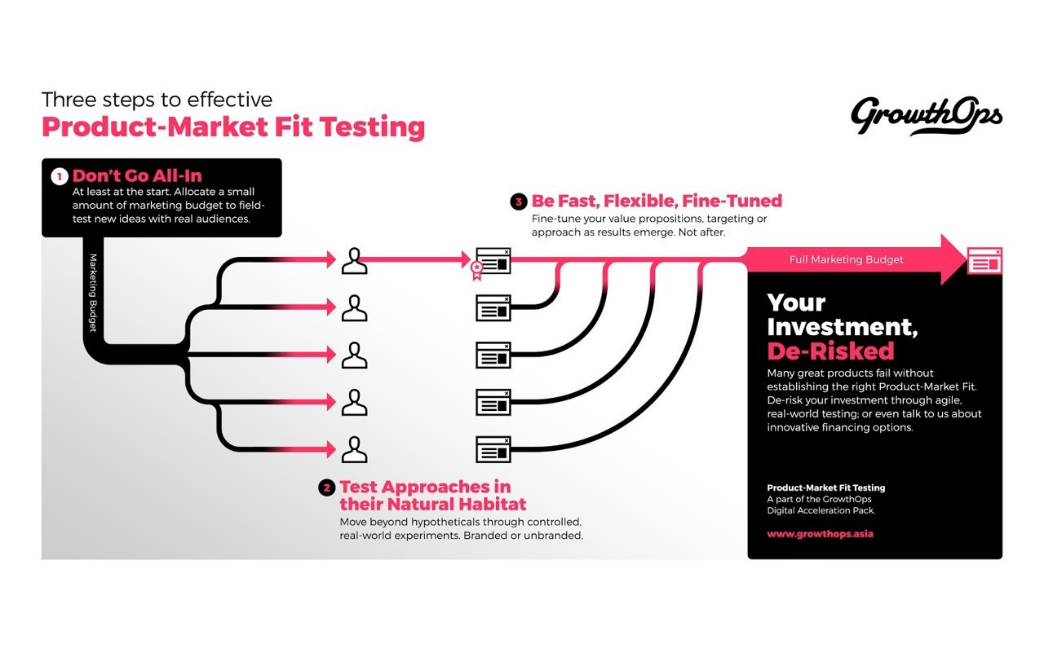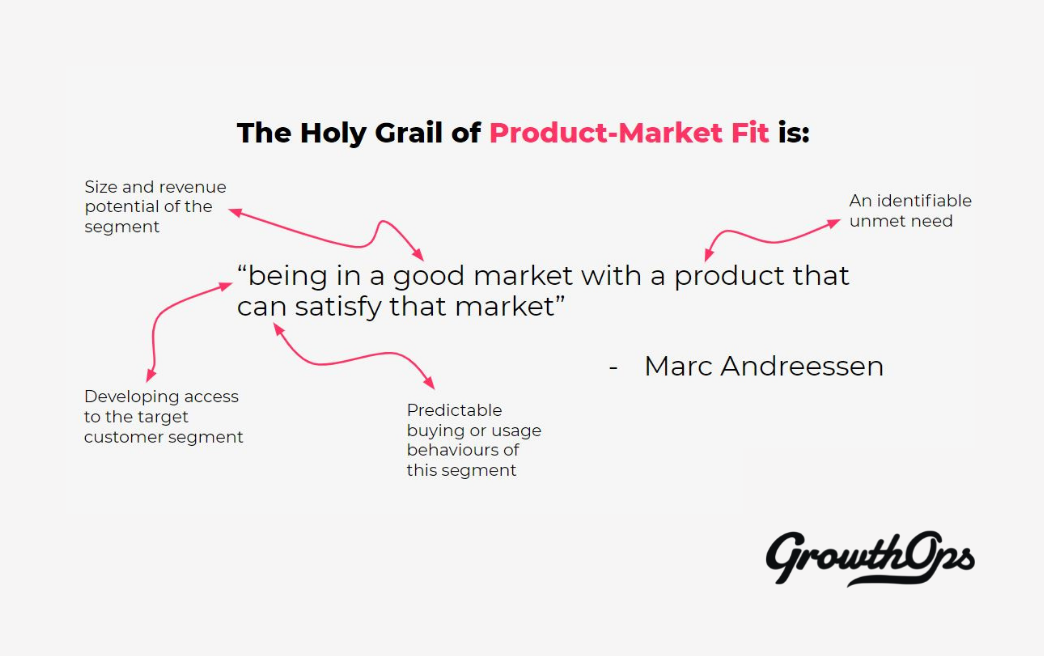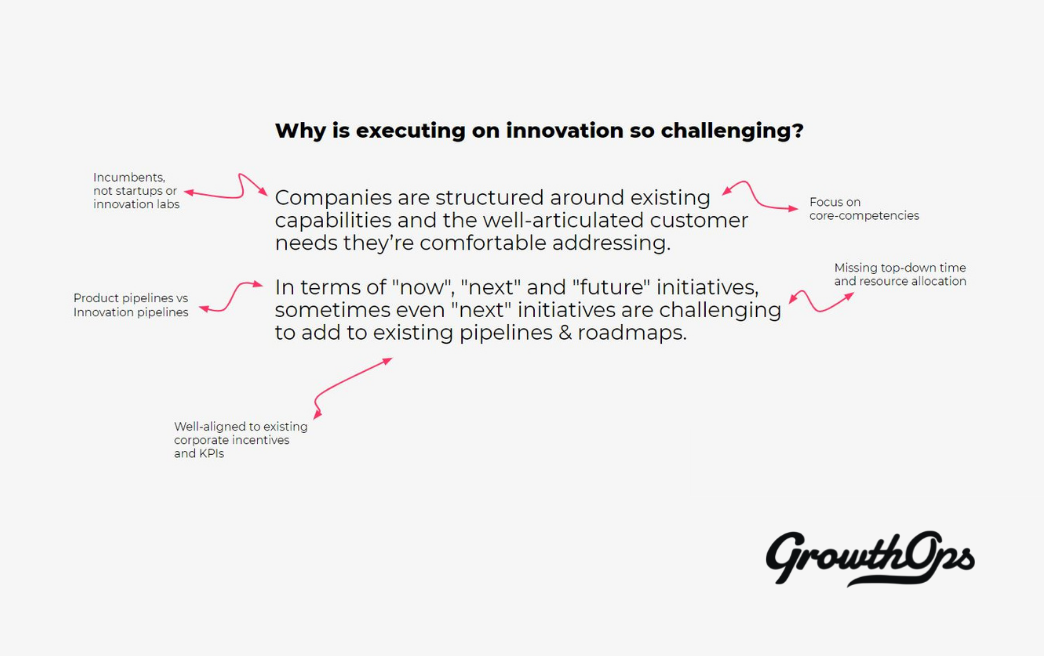Successful ventures start by putting the flame to your ‘amazing idea’, writes Ian Jones (Snr. UX/UI Designer, GrowthOps)
You have a brilliant idea for a new product or service. You have the know-how in this market that counts. You excel at executing. Past successes are proof that your new idea is in good hands. What could go wrong?
Here’s the thing. You will fail (probably).
Most successful, established companies (brimming with elite talent) routinely launch and then retire failed ventures. Google Glass, anyone? The McLobster??
Alberto Savoia, former Google Innovation Agitator and author of ‘The Right It’ calls this The Law of Market Failure:
“Most new products will fail in the market, even if competently executed.”
Execution matters, but ideas that aren’t in synch with what the market wants will fail. It happens when prospective customers don’t care about your product or service enough to purchase. So it’s worth reminding ourselves about a basic business truth:
“The single necessary and sufficient condition for a business is a paying customer” – Bill Aulet, Managing Director of Martin Trust Center for MIT Entrepreneurship.
Is The Law of Market Failure a fundamental truth we have to live with? Savoia reminds us that some things are beyond our control, but also suggests you can sway the odds in your favour. His advice is to start with the most important question for any new venture – do customers care?
How do I know if an idea is right?
You test it. Validating ideas is fundamental to entrepreneurial frameworks such as Lean Startup or Disciplined Entrepreneurship. These approaches build upon broader trends over the last few decades towards human-centred design and design thinking, which champion the importance of testing.
At GrowthOps, our experience tells us that robust testing and validation invariably leads to a better, more aligned customer experience. Globally successful companies embrace research and test-driven methods that focus on understanding what customers want, need, and how they behave. They validate their ideas with real people in the real world.
Measurement needs to be objective
Humans are riddled with bias. We easily convince ourselves that our idea is ‘the one’. This delusion is compounded by our friends, family, and peers as they nod their heads politely in agreement.
Traditional market research is similarly flawed as many of its methods (e.g. focus groups) solicit opinions rather than facts. Participants are aware of the ‘act’ of research itself, leading to demand characteristics or the Hawthorne effect. And then there’s confirmation bias plus a whole category of problems originating from the researcher and their methods.
Savoia calls this subjective world of bias, opinions and conjecture ‘Thoughtland’, and warns us to be wise to its ways. Heartache soon follows when that idea everyone seemed to love, and the market research suggests is ready to proceed, turns into a painful failure.
How does Savoia suggest we overcome these bias pitfalls? Easy. We fake it.
Pretotyping. The fast, cheap and objective way to test ideas.
Shorthand for ‘Pretend Prototyping’, a pretotype is designed to introduce a higher degree of objectivity when testing if an idea is worth building at all.
Pretotyping asks us to:
Identify the Key Assumption – Are people interested at all? Will they use it as expected? Will they continue to use it?
Choose a Pretotyping method – Choose quick and cheap methods, and there are several (we’ll look at an example next).
Define your Market Engagement Hypothesis – X% (how many) OF Y (market) WILL Z (describe how you expect them to engage)?
Test your Pretotype – Get into the real world and see how customers engage with it.
Evaluate your results – Learn from the test. If the results aren’t great you may need to refine your idea, pivot, or scrap it altogether.
At GrowthOps we have put pretotyping into practice. Let’s look at an example.
Pretotyping. An example out in the field.
A former Australian cricketer came to us with an idea – Cricket Hub. His vision? Deliver coaching of international standard via mobile app, with comprehensive skills videos amongst a range of other features.
The idea sounded like it had legs (padded of course! Ugh, sorry…). But what pricing model should we use? How many developers do we need? Before we knew it we were in ‘Thoughtland’. We needed an ice-cold can of reality called Pretotyping.
We applied Savoia’s pretotyping approach to Cricket Hub:Identify the Key Assumption – The target market will be interested in accessing premium coaching content via the Cricket Hub app.
Choose a Pretotyping method: With the key assumption defined, we asked the secretary of the Mumbai University Cricket Club to send an email to all members directing them to the website. This pretotyping method is called The Fake Door – a marketing entry point for an as-yet undeveloped idea.
Define the Market Engagement Hypothesis – We hypothesised that 10% of Mumbai University cricketers who visit the CricketHub landing page will subscribe to an email product launch list.
Test your Pretotype: – Working with the cricket club, we got the landing page in front of real cricketers and used analytics to track page visits and email signups to measure conversion rate.
Evaluate the results – So was the idea right? In short, no. There’s interest but the concept isn’t hitting sixes yet. The most important thing to recognise is that this isn’t a failure because the pretotype did its job. We have gained the most valuable thing any new venture could hope for – an objective measure of market engagement. We saved this fledgling business idea from becoming another ‘launch and ask questions later’ statistic.
What’s next for the team? It’s time to either refine our Market Engagement Hypothesis or make changes to the idea itself. And how do we test those changes? With pretotyping of course! There’s more to unpack within Savoia’s book The Right It, but you can see how compelling the method is. Pretotyping is a powerful tool for innovators.

The Cricket Hub landing page (only the header is shown above) was designed and built to look like a real product under development, but was actually just a Pretotyping Fake Door.
At GrowthOps we’re putting ideas to the test.
Pretotyping is just one of many techniques we employ to understand what customers value, and to inform better business decision making. We’re here to help you ideate, experiment and learn because it’s critical to Make sure you are building The Right It before you build it right.



